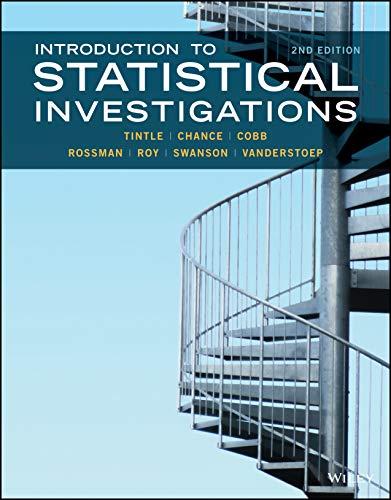In Exercise 11.5.7 we looked at the probability distribution of the sum of two dice. This time
Question:
In Exercise 11.5.7 we looked at the probability distribution of the sum of two dice. This time we focus on using probability rules to derive the properties of the sum of two dice.
a. Create a probability distribution for the numbers showing when you roll one fair six-sided die.
b. Find the mean and standard deviation for the distribution of number of dots showing when rolling one die.
c. Using the formulas for determining the mean and standard deviation for the sum of two random variables, find the mean and standard deviation for the sum of the numbers on two fair six-sided dice. How do these numbers compare to those from Exercise 11.5.7?
d. We can consider the sum of the two dice as X + X. What would 2X describe?
e. Find the mean and standard deviation of 2X. Does it have the same mean and standard deviation as X + X? If not, which standard deviation is larger and why does that make sense?
Data from Exercise 11.5.7
A regular six-sided die is a cube on which each side shows a different number of dots (1 to 6). The table shown below gives the probabilities of the sums of the dots on two regular six-sided dice when they are thrown.

Step by Step Answer:

Introduction To Statistical Investigations
ISBN: 9781119683452
2nd Edition
Authors: Beth L.Chance, George W.Cobb, Allan J.Rossman Nathan Tintle, Todd Swanson Soma Roy





